With almost one-quarter of sent emails ending their short life in a spam folder, those with an ineffective email strategy are missing out on revenue. It really is as simple as that.
Potential issues do not end there, however. Without a strategy, deliverability affects where an email is placed within a recipient’s main inbox, or sub-folders such as promotion, or social media.
It is pretty crucial, you might agree, to ensure you are poised for a good strategy in this specific area of email marketing. Again, we could be talking about quite hefty revenue losses if not addressed. As usual, we are here to help and through this article, we are going to make sure your emails land with the swagger they deserve.
Let’s take a look at how.
What Is Email Deliverability
Email deliverability is the ability of an email message to reach the intended recipient’s inbox. When an email is not delivered to the intended recipient’s inbox, it is said to be undelivered or bounced. There are many factors that can affect the deliverability of an email, such as the reputation of the sender’s IP address, the content of the email, and the configuration of the recipient’s email server.
To improve email deliverability, it is important to follow best practices such as obtaining permission from recipients before sending them emails, using a double opt-in process for subscribing to email lists and using a professional email service provider that can help ensure the emails you send are not flagged as spam.
Soft Bounce Vs Hard Bounce: What They Are And Why They Happen
The quality of your email marketing list can be assessed by looking at your email bounce rate. Although an email can bounce for a number of reasons, these variances are typically classified as either a soft bounce or a hard bounce. Let’s examine what differentiates a soft bounce from a hard bounce.
Soft Bounce
A soft bounce is an email that failed to deliver as a result of a temporary issue. If the recipient’s inbox is full or there is a problem with the receiving server, soft bounces can occur.
You can try sending the email several more times because a soft bounce is only momentary.
Hard Bounce
An email that can’t be delivered for ongoing reasons is known as a hard bounce. This frequently occurs when the recipient’s address is incorrect or outdated.
The subscriber’s email address might have been typed incorrectly, or the domain might not exist. Because they can lower your email delivery rate and sender reputation, hard bounces are a problem and can cause deliverability issues.
How To Improve Your Bounce Rate?
Tracking your email bounce rate is beneficial, but the most crucial thing you can do is address the issues that are contributing to a high bounce rate:
Require A Double Opt In
Having a double opt in requirement for all new subscribers is one of the best strategies to raise the quality of your email list. When a new subscriber enters their email address in an online signup form using a single opt in method, their email address is immediately added to your list.
In order to subscribe, a user must first provide their email address and then wait for an email with a link. They’ll be added to your list after they click the link and confirm their email address.
Because it takes longer to build an email list, some businesses are reluctant to use a double opt in method. However, if your subscribers confirm their email addresses, you’ll have a shorter but quality list with more engagement and a greater email deliverability rate.
Regularly Update And Clean Your Email List
Maintaining and updating your email list is not only necessary but should also be something you stay on top of and nurture, frequently. Unengaged subscribers and incorrect email addresses caused by typos or misspellings can be weeded out with a quick data check.
Additionally, it’s a smart idea to recheck your feedback loops on a regular basis and eliminate any subscribers that are not engaged (didn’t open your messages in the last 3 months, have complaints, or flagged you as spam).
Segment Your Email List
One of the best strategies to use is segmentation, which has the potential to boost your open rate by 39%. Once you’ve created an email list, classify it based on the different types of your prospect’s interest. You will be able to send them emails that are relevant to their needs thanks to this.
Why You Shouldn’t Use A Free Service To Send Emails
It is recommended not to send promotional emails using a free email provider like Gmail or Yahoo. One reason is that using a free email address to send professional emails can damage your reputation and hurt your delivery rate.
The other problem is that free email domains frequently fail the DMARC policy, thus your emails will probably face more hard bounces. Instead, send emails from a designated email service provider like Sendgrid.
Make Your Emails Mobile-Friendly

Number of smartphone subscriptions worldwide from 2016 to 2021, with forecasts from 2022 to 2027 (in millions), Source: Statista
The number of mobile users will rise yearly, with roughly 6.4 billion smartphones now in use. Be sure to consider mobile optimization! On mobile devices, page load time is even more important because poor load times can cause emails to bounce.
Verify Your Domain
The three main methods for establishing your domain’s authenticity are DMARC, SPF, and DKIM. However, a Litmus survey found that less than 40% of businesses really complete the verification procedure.
Your email bounce rate will decrease and your deliverability rate will increase as a result of domain authentication. Additionally, it will stop users from seeing security notifications when they open your emails.

What Affects Email Deliverability Negatively?
A High Amount Of Complaints
People will mark an email as spam if they find it to be undesirable. One of the main things that affect a sender’s reputation is this. Your emails can start to accumulate in the spam folder as a result. Therefore, make every effort to steer clear of spam complaints. The following are some essential strategies for reducing spam complaint rates:
- Make your unsubscribe link visible and simple to find.
- Switch on double opt-in
- Enable global unsubscribes
- Avoid spammy subject lines
A High Number Of Bounces
This typically indicates that an email list is out-of-date, or of poor quality, such as a temporary or disposable email address. Such senders receive negative treatment from different email service providers, which harms their reputation.
Low Rate Of Engagement
A further indication that a sender is not abiding by the best practices is if a subscriber receives countless emails but doesn’t open any of them.
As a result, an increasing number of the recipient’s emails will land in the spam folder. To that end, ensure you examine your email list once more.
Rather than waiting for inactive contacts to unsubscribe, it’s always preferable to clean your email list from subscribers who are probably not interested in your emails. It is better to have a smaller and more active email list that will generate far more sales, than a larger list of inactive contacts that will harm your sender’s reputation.
Too Many Campaigns
Receiving too many email campaigns per day might overwhelm subscribers, who might then report your emails as spam- which affects email deliverability. Some may even choose to stop receiving your emails completely.
Twice a week is the recommended frequency. For daily senders, no more than once each day.
A Sudden Rise In The Volume Of Emails Sent
Reputation is influenced by volume as so-called spammers frequently send emails all at once to a large number of addresses. You will therefore be heavily scrutinized if you send a large number of emails. Consistent volume and adherence to standard practices help in reducing this focus and establishing a strong reputation.
Going Back And Forth Between Various Email Service Providers
An email service provider can get the impression that the sender is a spammer attempting to cover their tracks, which will then affect your sender’s reputation.
What Best Practices Improve Email Deliverability?
Verify That The Email Is Desired
This indicates that the subscriber voluntarily chose to receive emails. Because of this, lists need to be opt-in and ideally, GDPR compliant. If you observe a significant unsubscribe rate, you may want to investigate how the email was initially created.
Steadily Boost Sending Volume
As previously mentioned, it’s not a good idea to launch your email marketing campaign by sending it to your entire list of 150,000 addresses right away.
Email service providers may perceive your first day of sending bulk emails as a spam attack and a threat. Your email will therefore be automatically classified as spam.
Clean Up Your Contact List
According to statistics, 30% of subscribers switch email addresses once a year. Therefore, you should routinely maintain and clean your list. Contact should be regarded as inactive if they haven’t connected with you (clicked on one of your emails) in the past 12 months.
Later, these emails can end up as spam traps. If a spam trap receives email, this indicates to inbox providers that the sender is not abiding by best practices for email marketing. This results in poor email deliverability and reputation.
How To Prevent Emails From Ending Up In The Spam Folder?
Request Whitelisting Of Your Email Address From Subscribers
Every effort is made by Google, Microsoft, and Yahoo! to make sure that emails sent by users aren’t blocked by spam filters in their email programs. These businesses rightly tend to think that an email isn’t considered spam if it comes from a contact in your address book.
Ask your subscribers to whitelist your emails by adding your “From” address to their contacts or list of safe senders in order to guarantee that your emails receive this privileged treatment. Whitelisting will improve your email deliverability considerably. You shouldn’t assume that all of your subscribers have the technical know-how to whitelist emails, so we advise giving instructions and screenshots that show them how to do so.
It’s best to include Whitelisting instructions from the get-go when you send your first welcome emails to your subscribers.
Get Consent Before Sending Out Emails
Sending emails without consent is the fastest way to have them marked as spam. Consider what you would do if you received an email from an unknown sender. You will mark the email as spam without even opening it, assuming it even gets past the spam filter of your email provider.
Without their consent, sending marketing emails to customers is not a long-term business success strategy. You need your subscribers to be involved and interested if you want them to buy from you. Random email recipients are neither; at best, they are indifferent, and it’s more likely that they’re annoyed to get an email from a stranger.
Before sending an email, always request consent; this is the morally and financially safest course of action.
Avoid Using Spam-Filtered Subject Lines
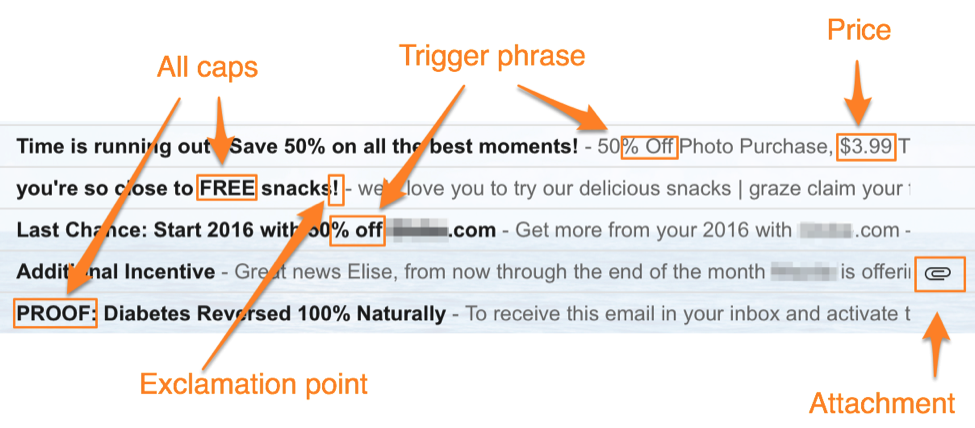
Source: Yesware
While there used to be a list of precise “spam trigger words” to stay away from in your marketing emails, spam filters today are considerably more advanced. Therefore, it’s preferable to ensure that you don’t write subject lines that sound like spam rather than concentrating on particular terms to avoid.
Even though some of these emails may come from reputable brands, spam filters classify them as spam due to the wording and punctuation marks that these email marketers use. Take note of how frequently these emails mention money, overuse exclamation points, or generally make discount promises.
We are not suggesting, of course, that you should never use a subject line that offers a discount or a deal in an email. It does highlight the need for discretion when using these topic lines, however.
Make Unsubscribing Easy
It may seem counterintuitive to suggest making it easy for subscribers to unsubscribe from your email list, but doing so is essential for both abiding by the CAN-SPAM Act and gaining the trust of your subscribers. While being within the law is of the utmost importance, giving subscribers a way to unsubscribe also conveys to them your confidence in the value of your content. After all, why would you send emails in the first place if you don’t believe they’re great?
You decide how simple it is to unsubscribe. Some businesses go above and beyond by including an unsubscribe button in both the header and the footer of their emails.
Therefore, we believe that for the majority of small business owners, a basic unsubscribe link or button in the email footer is the best option. Remember that your email marketing software will already have this functionality integrated into its templates.
Why Do You Need SPF, DKIM, And DMARC?
The most common ways for hackers to access the network are through phishing and email spam. An entire company can be compromised by ransomware, crypto-jacking scripts, data leaks, or privilege escalation attacks if just one user opens a malicious email attachment.
The reason why most businesses use all three of these measures to safeguard their email systems is less well-known. The different solutions don’t all necessarily overlap, as is common in the IT industry. They actually work well together, therefore it’s likely that the typical business will require all three of them.
What Is SPF?
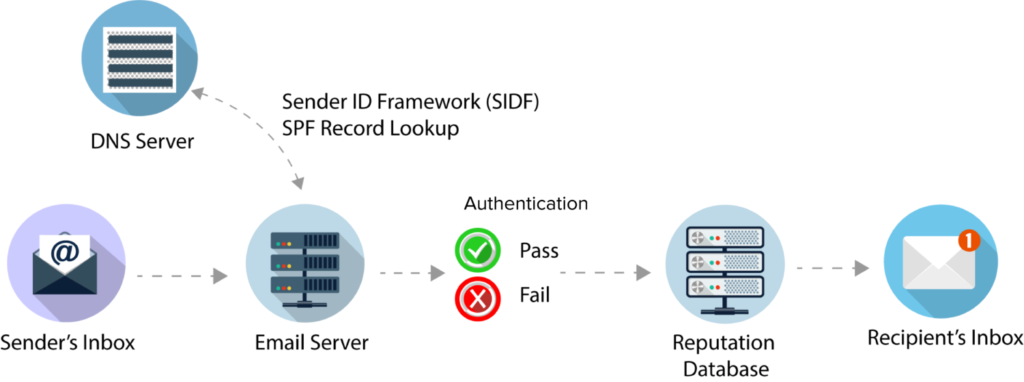
An email message is validated using SPF (Sender Policy Framework), a form of email authentication that ensures it truly originates from a trusted mail server. A list of permitted IP addresses for that domain is compared to the email address before it’s delivered. SPF is frequently used to identify forgeries and prevent spam.
What Is DKIM?

DKIM (Domain Keys Identified Mail) is another popular method of email authentication. It provides an easy way for the recipient of an email to confirm its legitimacy. To do this, an email is verified and validated using encryption keys and digital signatures.
The primary purpose of this sort of authentication is to recognize and prevent spoofing and phishing. DKIM authentication, in contrast to SPF (Sender Policy Framework), is visible within the email itself, assisting in preventing a recipient from responding to fraudulent emails.
What Is DMARC?
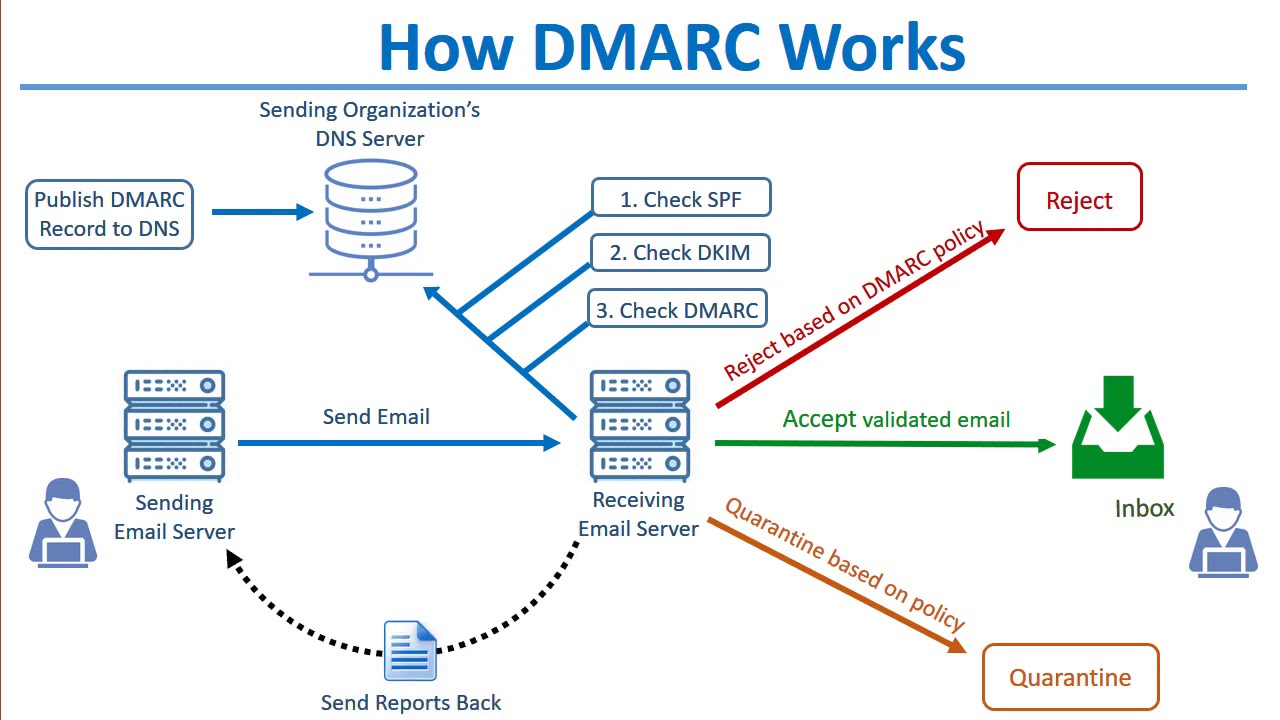
Source: Stealth
Domain-based Message Authentication, Reporting, and Conformance are referred to as DMARC. It is a relatively recent email authentication system that guards against email spoofing or the usage of your domain without authorization. Because it verifies the sender of an email using both DKIM and SPF data, DMARC is particularly useful for businesses.
A DMARC record enables a sender to specify that their messages are SPF and/or DKIM protected and instructs a recipient what to do in the event that neither of those authentication methods succeeds, such as junk or reject the message. DMARC limits or completely eliminates the user’s exposure to potentially fraudulent and harmful communications by taking the guesswork out of how the receiver should handle these rejected messages.
Additionally, DMARC gives the email recipient a method to inform the sender of emails that pass or fail the DMARC evaluation.
Best Tools For Email Deliverability Testing And Improvement
MailTester.Com
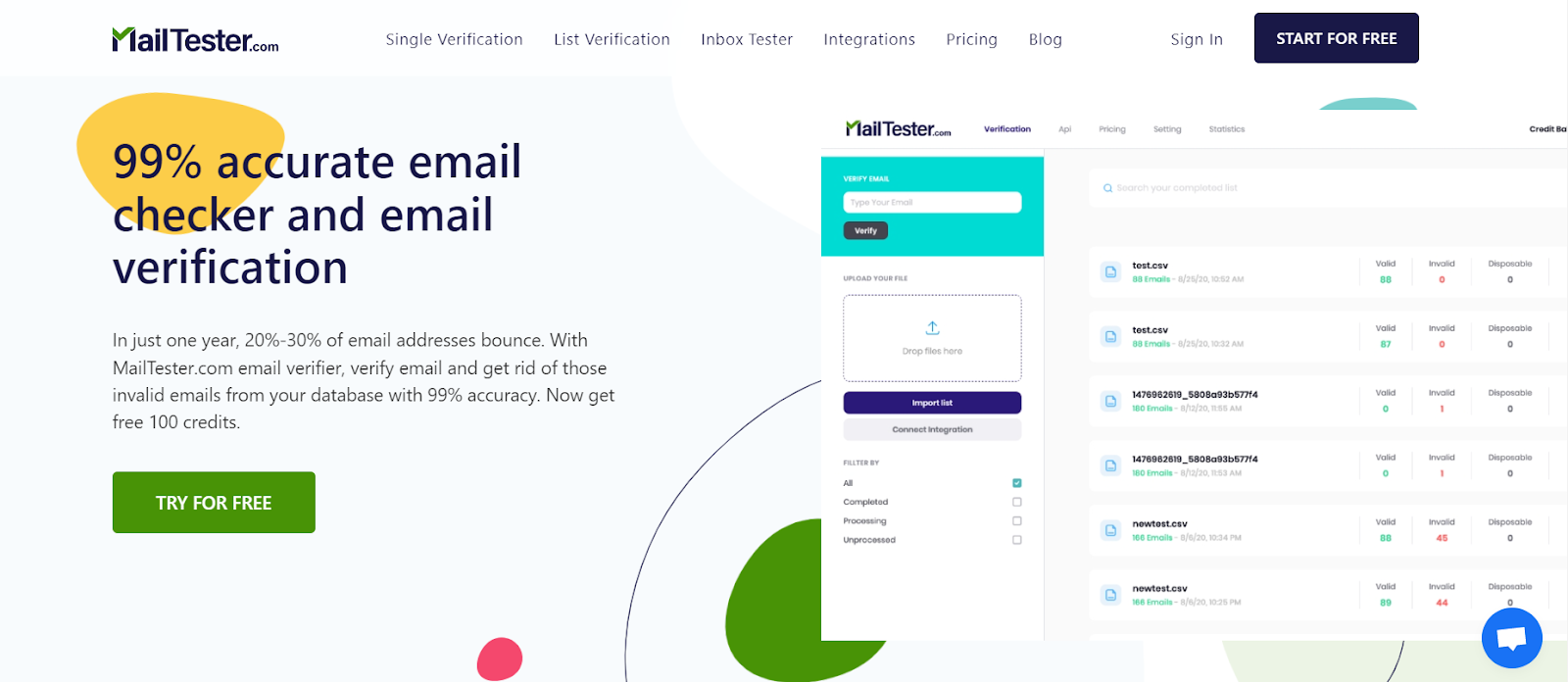
With the help of MailTester, you can quickly and easily determine the quality and deliverability of your emails. Simply submit your message to the email address created on the company’s website. Insightful reporting will then be provided, including information on your mail server and sending IP, content, and broken links, just to mention a few. It will also show you whether your email account is authenticated.
Additionally, a score between 1 and 10 will be provided- indicating the possibility that your email will reach your recipient’s inbox. This email checker offers a pay-as-you-go plan, monthly and yearly memberships, and a free analysis of up to three emails each day.
You can bulk-check your email list with MailTester to remove invalid email addresses, increase deliverability, and increase the ROI of your email marketing campaign.
Unspam
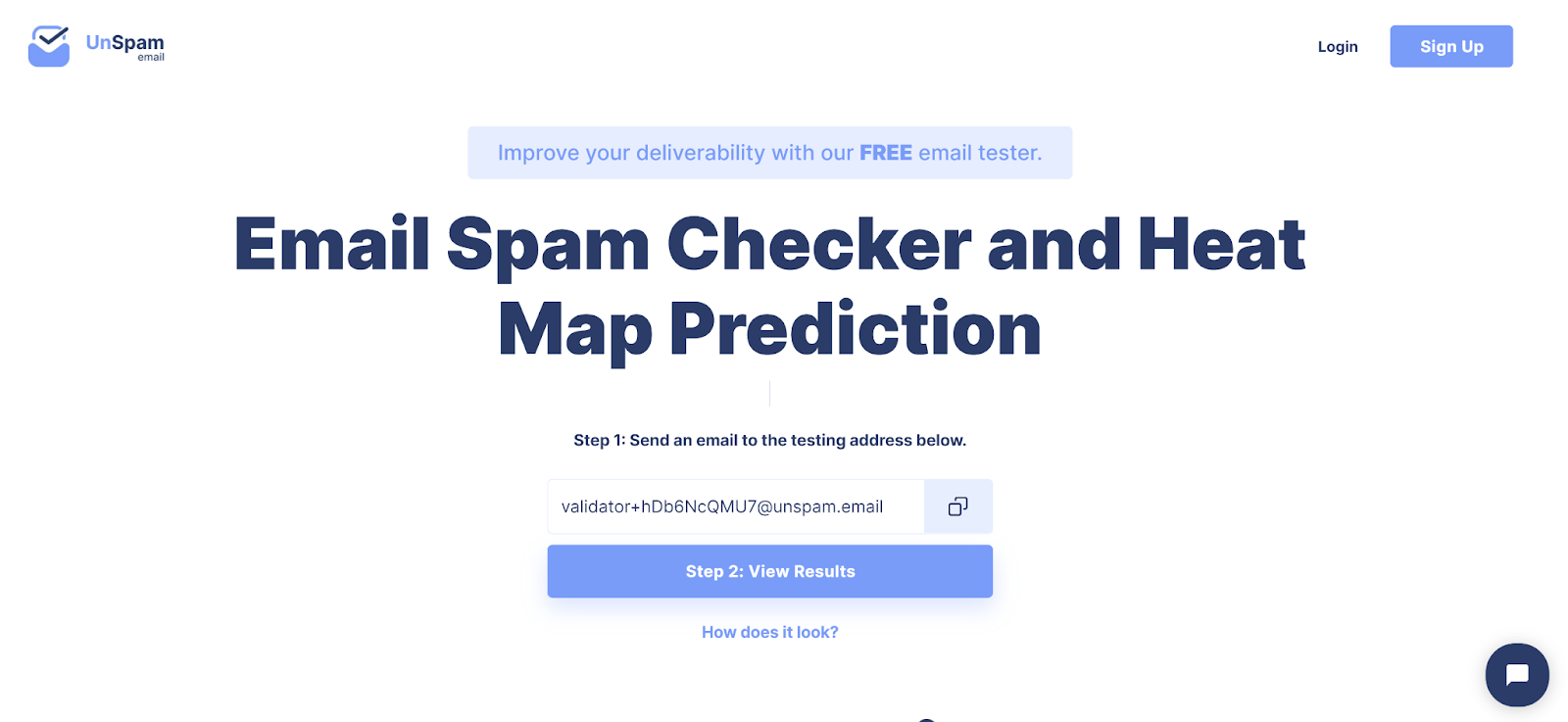
Unspam is an email spam checker that offers a thorough analysis on the deliverability of your emails after examining the subject line, broken links, HTML best practices, IP blacklists, and other factors. It is simple to use, and you may use the provided testing address to check the deliverability of your email.
This software also helps you construct campaigns that are more effective by using an eye-tracking prediction heat map. This heat map shows which parts of your email are most and least engaging while providing you with a clarity score to identify the areas that are cluttered.
You can test up to 10 emails every month in its free edition, and a premium version is available for $14 per month.
GlockApps
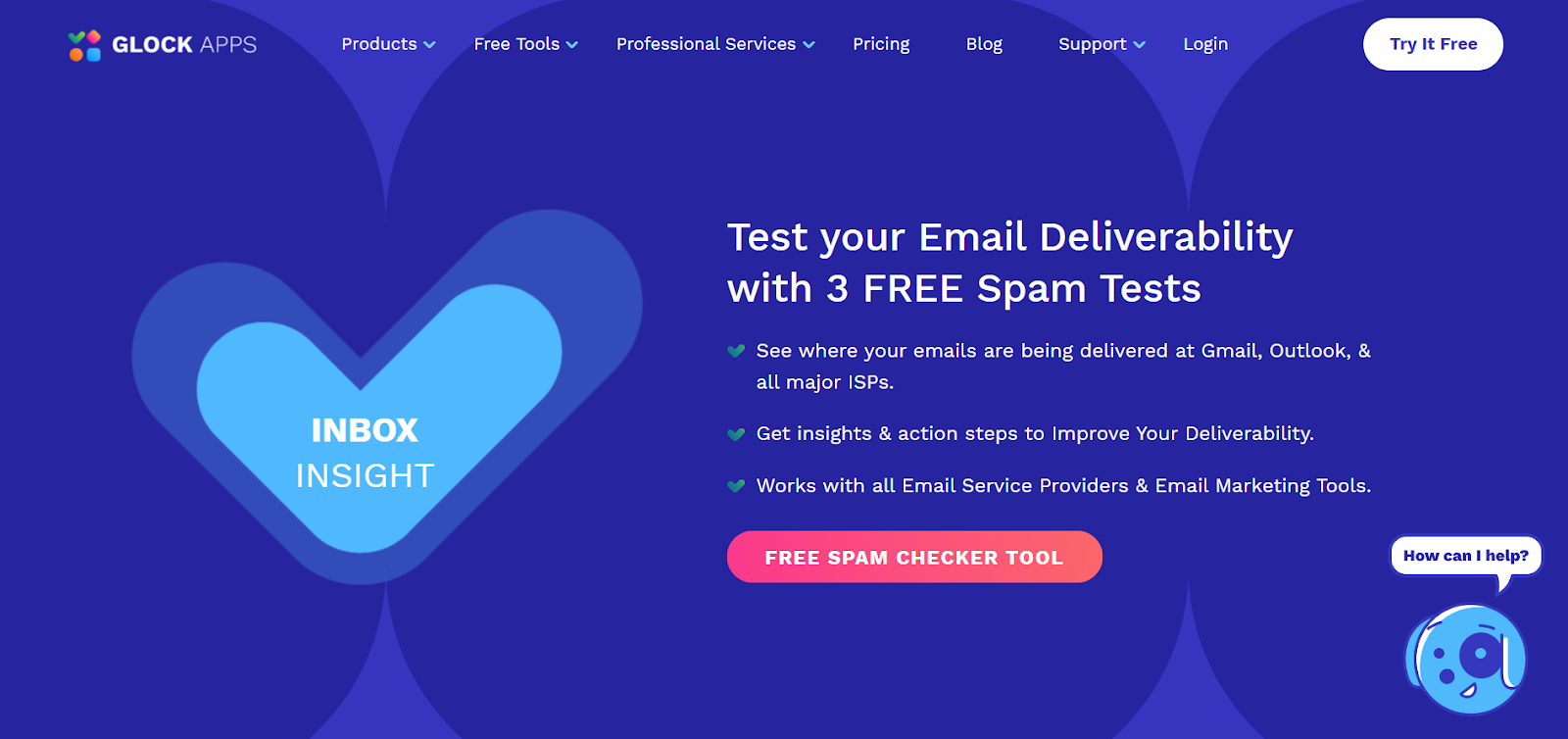
GlockApps is another reliable email spam checker that can assist you in increasing deliverability by filtering your email content and exposing problems that could send it to the spam folder.
Similar to the earlier tools, a detailed report can be obtained by sending a copy of your message to the email address listed on the website. For further phishing and spoofing protection for your domain, this product includes a DMARC Analyzer. Three email spam tests are allowed per month in the free edition, while the cost of the premium version starts at $59.
Mailtrap
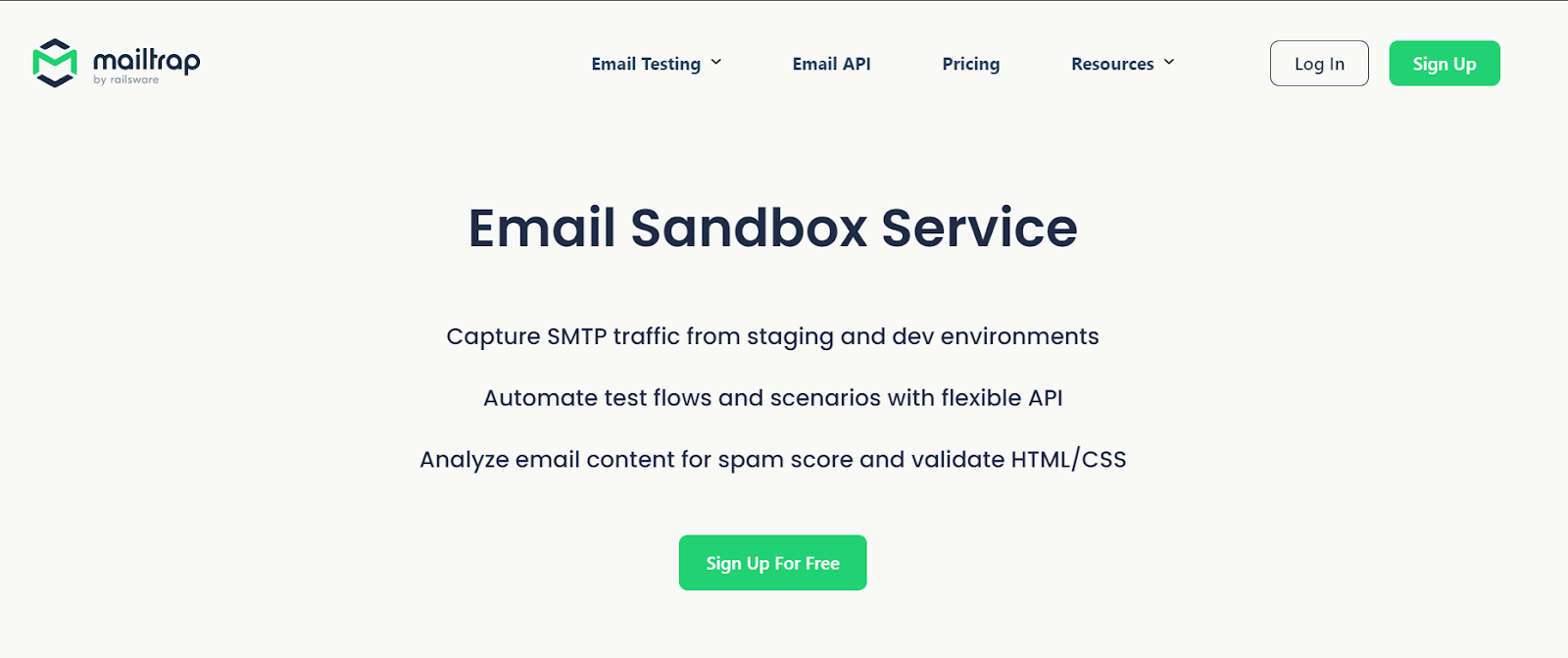
Mailtrap checks your email’s headers, links, subject lines, and more to provide you with an in-depth report that covers all the elements of email testing. With its collaborative platform, you can share the testing space with colleagues and see the findings in real time, making it simpler for your team to spot and fix problems that could compromise your deliverability.
You can use Mailtrap to inspect the list of unsupported elements, change them, and retest your email by checking the HTML and CSS support for the most common email clients, such as Gmail, Apple, Mail, and Outlook. You can also use this capability to customize your emails for particular email clients or devices, such as PCs, tablets, and mobile devices.
There are several premium memberships for freelancers, teams, businesses, and more, as well as a free version of Mailtrap for new users to try out.
What Is Sender Reputation?
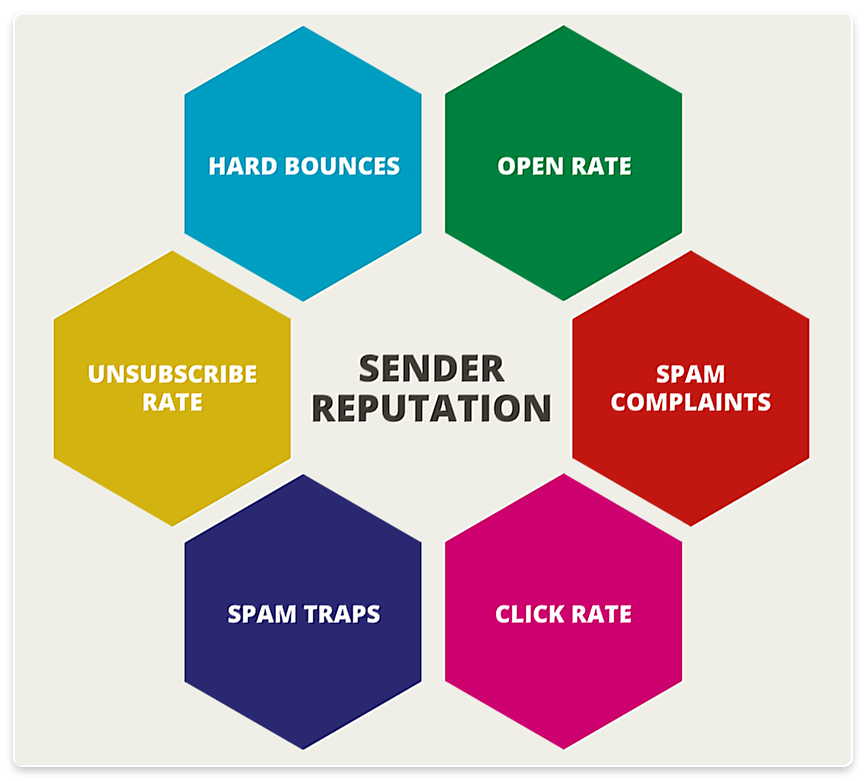
Source: Snov.io
An Internet Service Provider (ISP) rates an entity that sends an email by giving it a reputation score. It’s essential to the deliverability of your emails. The higher the score, the more probable it is that an ISP will send emails to the primary inbox of the recipients. The ISP may send communications to recipients’ spam folders or even reject them outright if the score drops below a predetermined threshold. The score can be influenced by a number of variables, including but not limited to:
- The volume of emails that the organization sends
- The number of receivers that report the sender’s emails as spam or make other complaints to the ISP
- How frequently do the company’s emails fall into the ISP’s spam trap
- The company’s placement on several blacklists
- The number of emails sent by the company that bounced back because they were sent to unknown individuals, or for other reasons
- The number of recipients that read the emails sent by the organization, click any links in them, and then reply, forward, and delete them
- The number of recipients that unsubscribe from the organization’s email list
When determining the reputation of a company that sends emails, each ISP (Internet Service Provider) chooses which characteristics to include in its sender reputation and how heavily it weighs those aspects. For various ISPs, a sender may have different reputation ratings. Each IP address will have a different sender reputation if the sender uses multiple domain names and sends emails from various IP addresses.
Tools To Check Your Sender Reputation Score
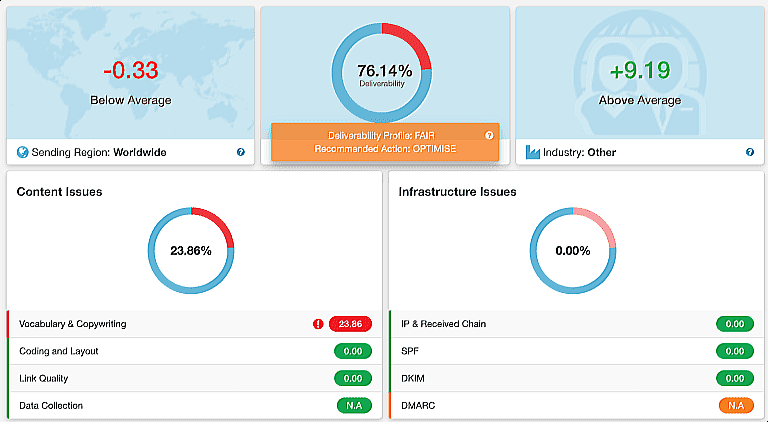
Source: Mailtrap
While it’s true that no single score is used by all modern email service providers to assess your sending, you can track your reputation by using some tools from third parties or even mailbox-specific solutions. These technologies all use various data sources to assess senders according to their actions and results.
These scores, when used in combination with other variables, can be very useful in spotting reputational issues even though they rarely provide the full picture. Tools that provide reputation scores include:
SenderScore.Org
A Sender Score is an indicator of your reputation, similar to a credit score. You receive a score from 0 to 100 from Sender Score. The better your reputation and email delivery rate, the higher your score. The rankings, which are based on a rolling 30-day average, show how your IP address compares to those of other IP addresses. Validity is the provider of this service.
BarracudaCentral
Through their Barracuda Reputation System, a live database of IP addresses with “poor” or “good” reputations, Barracuda Networks offers both an IP reputation lookup and domain reputation lookup. To find out if you made the good or bad list, check your IP score.
TrustedSource
The McAfee-run TrustedSource website offers details on the affiliations, domain name system (DNS), and mail server information of your domain as well as information on its email and web reputations. Additionally, it offers information about the background, activation, and affiliations of your domain.
Google Postmaster Tools
Senders can track information on their frequent sending into Gmail using Google’s Postmaster Tools, which are made available to senders. They offer useful information such as domain reputation checks, IP reputation checks, and Gmail delivery issues, among other things.
Microsoft SNDS
Microsoft has a service called Smart Network Data Services that is comparable to Google’s Postmaster Tools (SDNS). Insight into data points like your transmitting IP’s reputation, your spam complaint rate, and how many Microsoft spam traps you are delivering to are just a few of the data points supplied by SNDS.
Unlike two of the biggest mailbox providers, not every mailbox provider provides you with information on how they perceive your sending reputation. You can view a free daily analysis of the reputation of the messages these significant providers see from you with Google Postmaster Tools and Microsoft SNDS. Although the way Google and Microsoft see your sending reputation has no bearing on how other providers view your mail, it’s a safe bet that difficulties with these major providers will be accompanied by comparable difficulties elsewhere.
What Is An Email Service Provider?
An email service provider (ESP) enables users to send marketing emails to their list of subscribers.
Technology companies known as email service providers help people establish email lists and send emails more easily. Many email service providers have emerged that offer unique services as email marketing has grown in popularity as a marketing channel.
An ESP must, at the most fundamental level, store both email addresses and deliver emails.
What Is The Best Email Service Provider?
In order to answer this question we first need to understand the difference between email marketing and email deliverability software tools.
Email marketing tools are used for both transactional emails and marketing/automated emails. For example, if a website visitor downloaded your free eBook, he can get a series of emails over a designated period of time explaining the eBook and giving some useful tips in order to build rapport and long term business relationships.
Email deliverability tools are used to send transactional emails only. For example, if a website visitor purchases an item from your eCommerce store, he will get an email with his receipt.
MailChimp
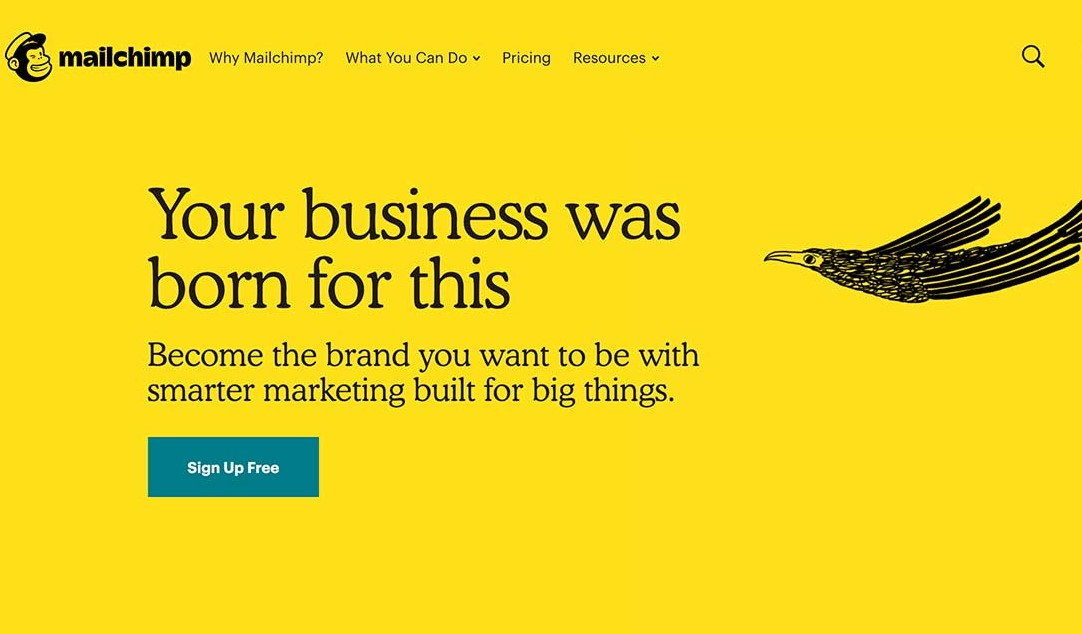
MailChimp is a simplified email marketing platform. Its user interface is really straightforward and has many helpful features. Other platforms like Magento, Shopify, and WordPress can be integrated with MailChimp.
Although the HTML controls provide greater flexibility, MailChimp also includes a simple email creator. Segmented contacts, merged tags, and personalized delivery times can all be utilized. In the end, MailChimp is the ideal all-inclusive solution for getting started with email marketing. Mailchimp is free as long as you have no more than 2,000 subscribers; after that, monthly plans begin at $10.
GetResponse
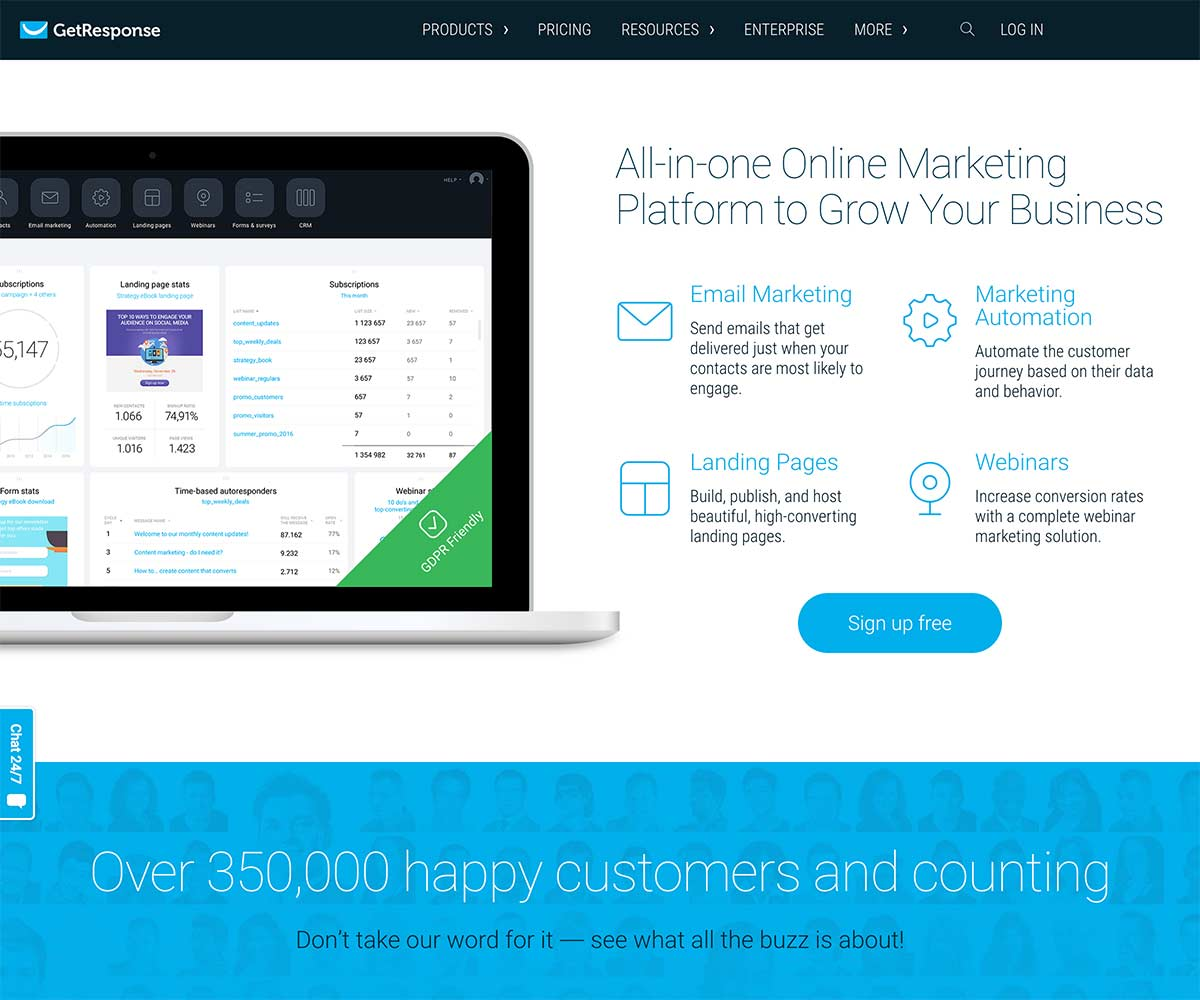
GetResponse is one of the most commonly used email marketing programs. It has excellent automation features, such as smart campaigns and segmented contacts, which set it apart from other basic email service providers. Additionally, it provides helpful landing page creation tools that let you combine your message and sign-up form into one page. It’s free for the first 30 days of use, thereafter their monthly fee is payable and starts at $15.
Hubspot
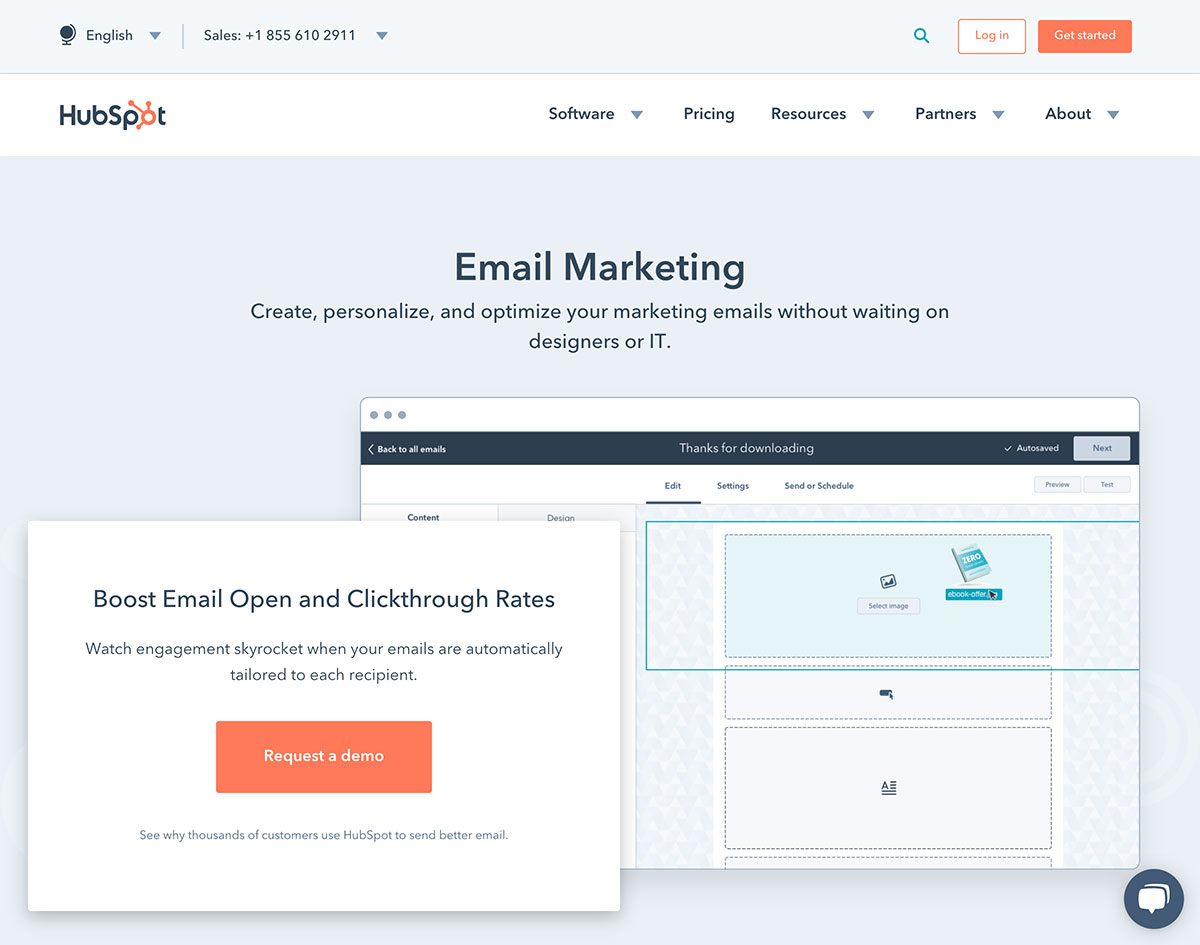
HubSpot is an excellent resource for a wide range of marketing tools and services. It includes pre-built workflows to make it easier to get started, and you can link it with other sales tools and customer relationship management programs without much difficulty.
Hubspot focuses on data-driven, intelligent campaigns. It’s simple to reach customers swiftly without wasting time or money by automating user marketing. These features do, however, come at a price. The email plans offered by Hubspot are not cheap, they start at $50 per month.
ActiveCampaign
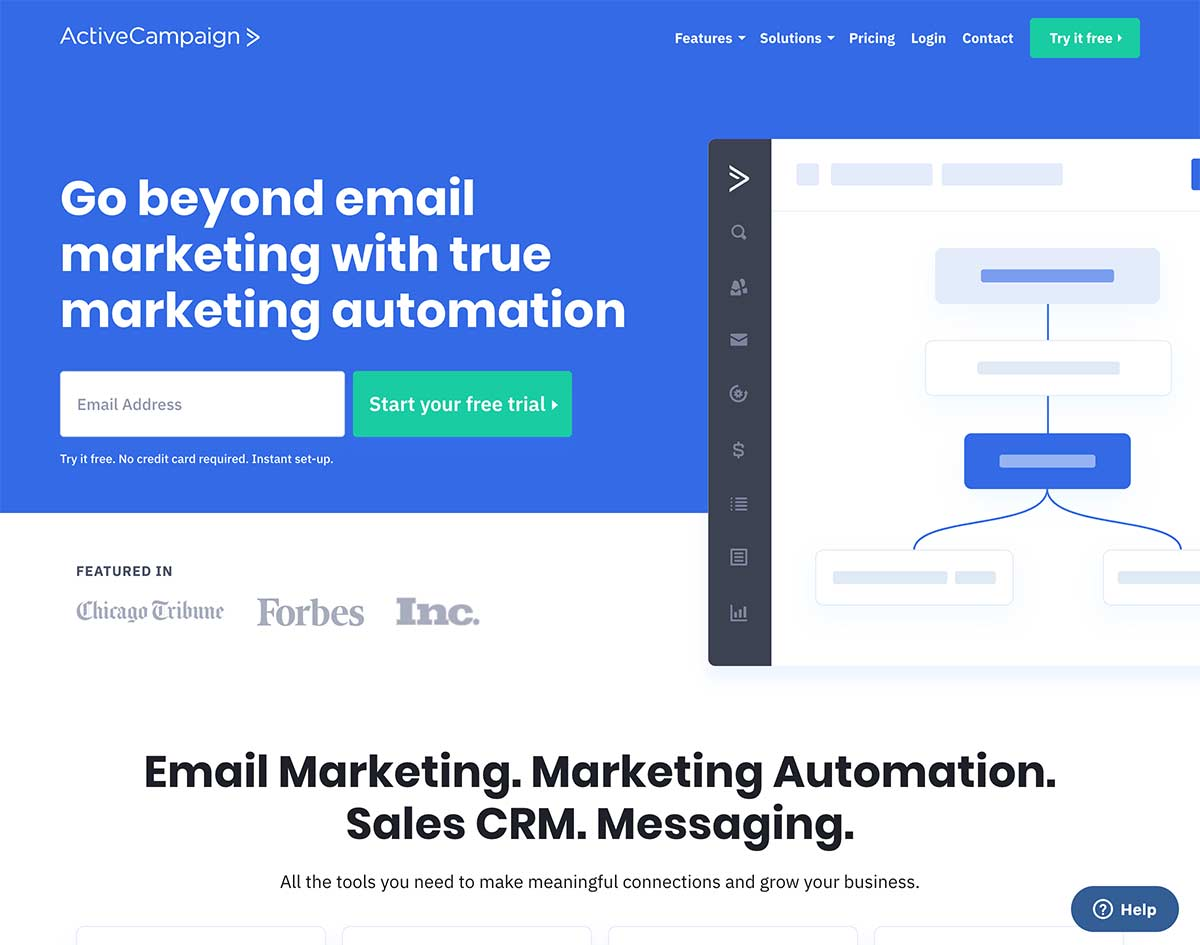
The ESP ActiveCampaign was created with sales in mind. Making sharper emails that result in more purchases is key. The platform’s mobile-friendly signup forms are its main selling point. ActiveCampaign may be integrated with several platforms, such as WordPress, and you can even send text messages via SMS following campaigns.
If you’re seeking to create a top-notch sales funnel, ActiveCampaign is one of the more expensive solutions, but it offers a significant return on investment. The custom campaign features can be used by developers to build very effective user-direct marketing channels. ActiveCampaign’s monthly rates begin at $9.
Sendgrid
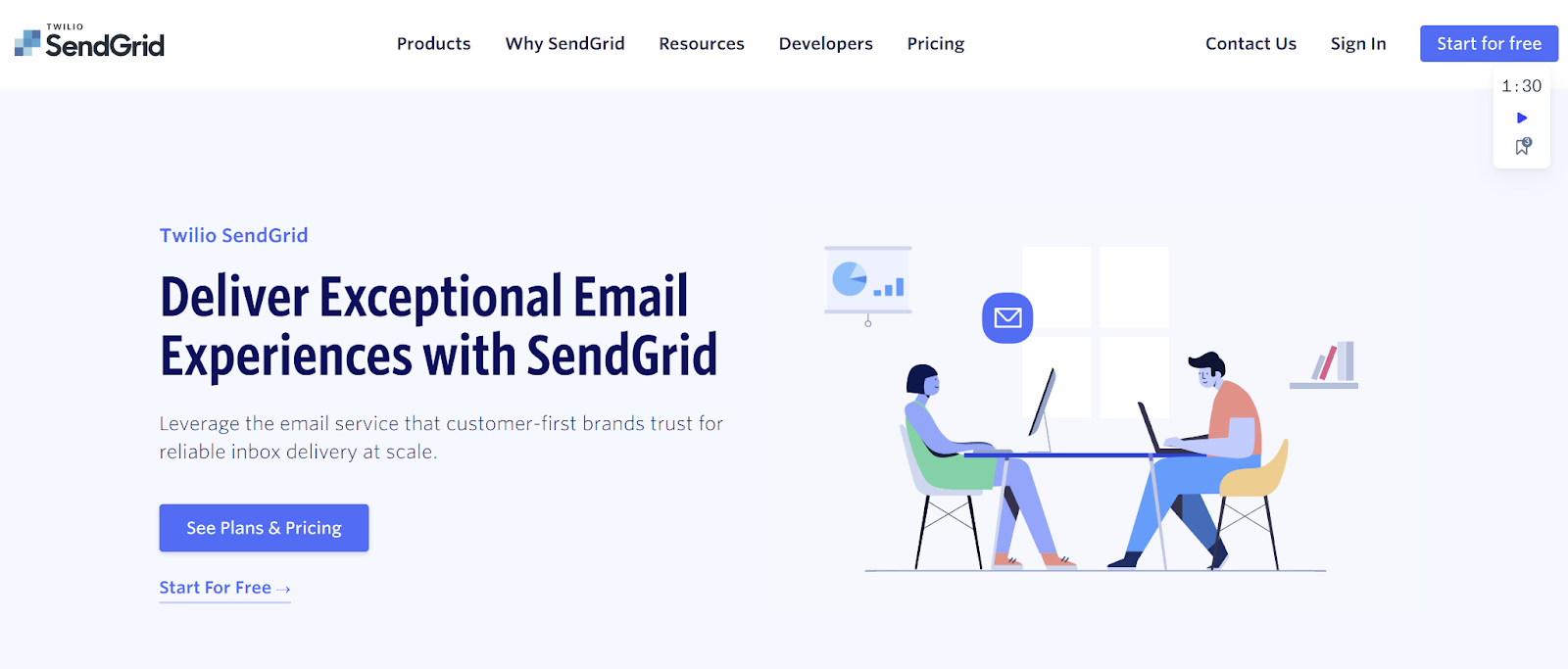
Without question, SendGrid is the market leader in transactional email. While neither the cheapest nor the priciest alternative, SendGrid’s amazing 24/7 live support, email statistics, easy integration with a simple API, and their reputation for having a very high delivery rate are what make their platform appealing.
Even though other choices excelled in some areas, SendGrid has a strong overall mix of crucial features.
Amazon SES
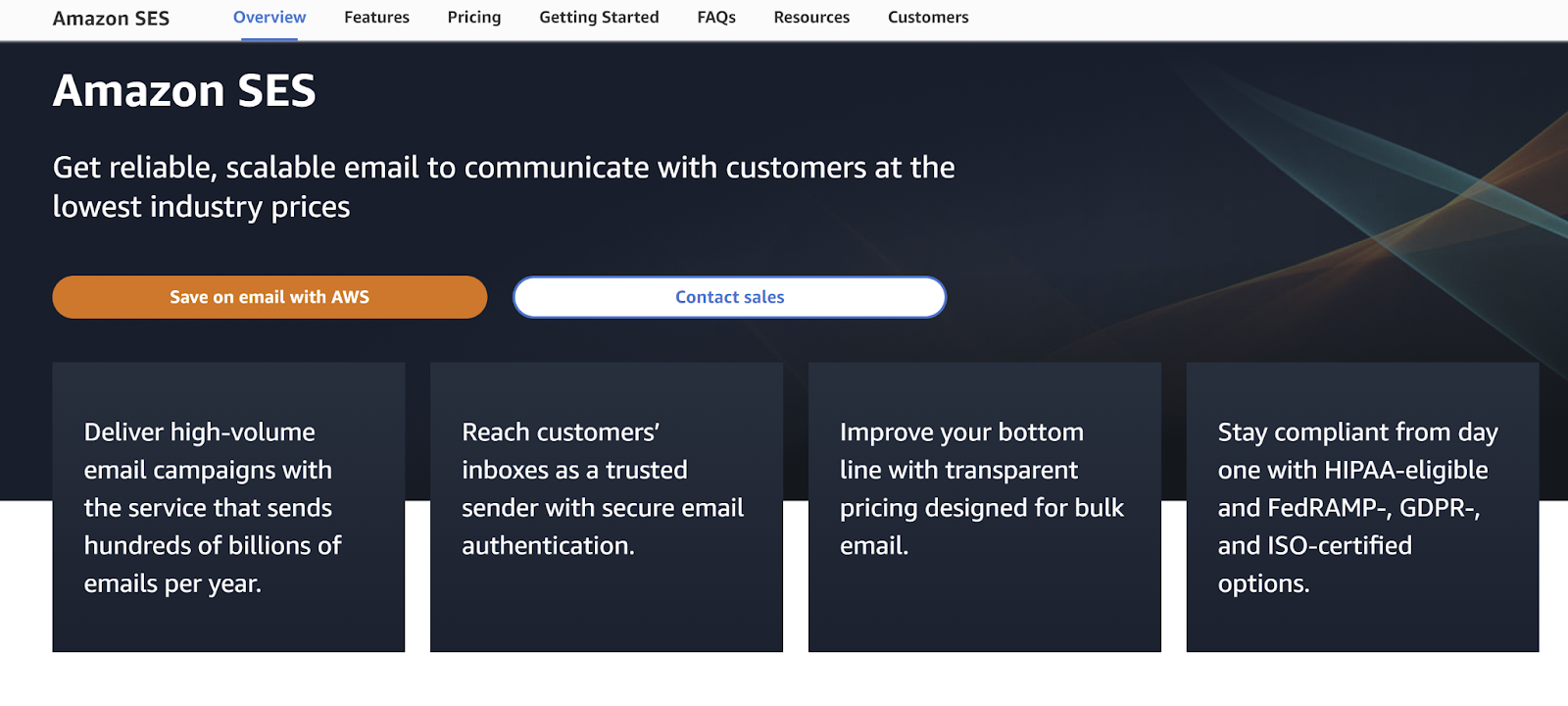
Amazon is tough to beat when competing on price. Amazon SES is incredibly affordable and scalable at $0.10 per thousand emails.
To sum it up, the AmazonSES interface might be described as quite messy and cluttered, while tinkering with their API can be a genuine pain. There are a few solutions that will let you to use Amazon SES’s inexpensive cost without its subpar user experience. Utilizing a self-hosted interface like Sendy, which sends emails using the Amazon SES API, is one option.
The optimal choice for you will depend on your financial situation, coding skills, and patience. Despite being by far the least expensive alternative, Amazon’s service, features, and support are lacking.
What Are Internet Service Providers?
Internet service providers (ISPs) are organizations that give you access to the internet. You can access any online resource, including your mailbox, via the internet. Examples of well-known ISPs in the US include AT&T, Verizon, and T-Mobile. You can also send and receive emails using a mailbox that these ISPs provide (like Gmail).
How Are Internet Service Providers Affecting Your Email Deliverability?
When an email is sent, they first pass through ISPs before reaching mailbox providers, from where they move into the inboxes of users. ISPs, therefore, have the power to prevent further delivery of your emails if they raise red flags with them.
Let’s talk about a few major factors why ISPs might be restricting your emails.
Sending Spam Emails
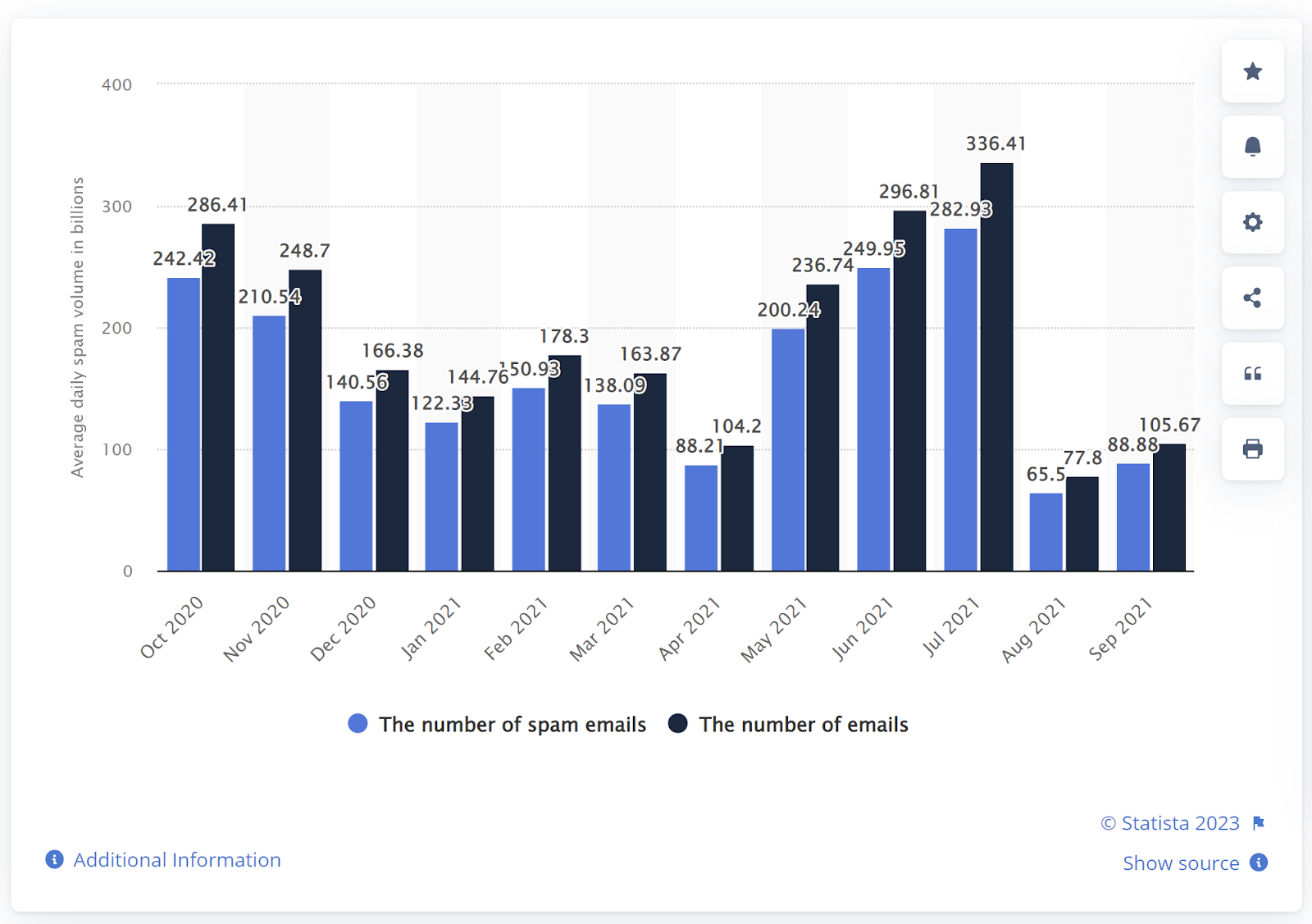
This is a major issue. Nobody enjoys getting spam emails they didn’t subscribe to. According to Statista, almost 105 billion spam emails were sent in September 2021. ISPs use signals from a variety of sources to prevent this massive chaos, and if they discover that you frequently send spam emails, they will stop sending the majority of your future emails.
Sending General And Cold Emails
Similarly, people will mark you as spam and ISPs will ban you if you send mass emails without customization.
Poor IP Reputation
IP reputation can be challenging. If you have a shared IP address, the actions of other users may have a detrimental impact on your email deliverability. ISPs will then ban all emails coming from that shared IP address, including yours.
Poor Domain Reputation
If you’re serious about email marketing and email deliverability, you’re presumably using a domain-based business email account. Therefore, it will have a reputation that is determined by the kind of emails that have previously been sent from email accounts associated with this domain. The reputation of the domain would soar if it had individualized, high-quality content. However, your domain’s reputation would be poor if it sent out predominantly spam and malicious emails. In that instance, ISPs will detect it and stop allowing your emails to reach end customers.
Key Takeaways: Email Deliverability
Email marketing is still one of the most successful marketing strategies and it depends heavily on your email deliverability rate. If you maximize email deliverability and use it properly, you will target potential customers with the right information, at the right time. As a result, you will gain loyal and long-term customers.
Staying informed about how email marketing is changing can help you stay compliant with both the law and best practices to improve your email deliverability. Responsible and lawful email marketers make it a point to stay up to date on spam filtering technology, ISP behavior, and email sending laws.
